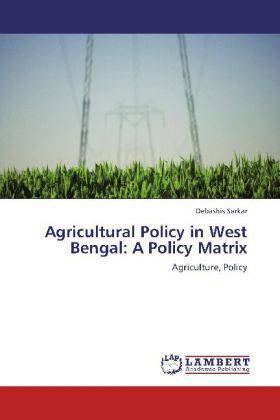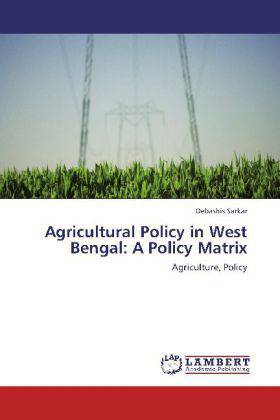
- Afhalen na 1 uur in een winkel met voorraad
- Gratis thuislevering in België vanaf € 30
- Ruim aanbod met 7 miljoen producten
- Afhalen na 1 uur in een winkel met voorraad
- Gratis thuislevering in België vanaf € 30
- Ruim aanbod met 7 miljoen producten
Zoeken
Agricultural Policy in West Bengal: A Policy Matrix
Agriculture, Policy
Debashis Sarkar
Paperback | Engels
€ 89,45
+ 178 punten
Omschrijving
The book presents an analysis of the development, progress and problem of West Bengal agriculture and the role of public action in address that problem. The analysis is based on a broad view of agricultural development on the WTO regime, focusing on constraints to meet the requirement of obligations. West Bengal s success in different policy periods since independence has been quite limited. Recent diagnoses of this failure of policy have concentrated on the counterproductive role of government regulation, and on the need for economic incentives to accelerate the growth of agriculture. The book argues that an assessment of West Bengal s failure to eliminate the basic problems has to go beyond this limited focus, and to take note of the role played in that failure by inadequate public involvement in the promotion of basic infrastructure. Even the fostering of fast and participatory agricultural growth requires some basic infrastructural change, which is not addressed by liberalization and economic incentives. Following on this, the book considers the scope for public action to address these problems and achieve a transformation of policy priorities.
Specificaties
Betrokkenen
- Auteur(s):
- Uitgeverij:
Inhoud
- Aantal bladzijden:
- 180
- Taal:
- Engels
Eigenschappen
- Productcode (EAN):
- 9783847314646
- Verschijningsdatum:
- 12/12/2011
- Uitvoering:
- Paperback
- Afmetingen:
- 152 mm x 220 mm
- Gewicht:
- 272 g

Alleen bij Standaard Boekhandel
+ 178 punten op je klantenkaart van Standaard Boekhandel
Beoordelingen
We publiceren alleen reviews die voldoen aan de voorwaarden voor reviews. Bekijk onze voorwaarden voor reviews.











